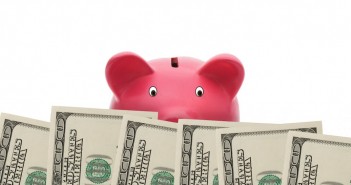It is a well-known fact that different sellers use different marketing strategies to lead us into buying their products. They lead us not only into buying but also into paying more than we are inclined to. We sometimes don’t even know that we are tricked but when we see our empty wallet, we then realize what has actually happened.
Let’s see what their strategies are which make us confused and thus tricked.
 Red prices are for men
Advertisements
Red prices are for men
Advertisements

According to Puccinelli et al. men are most likely to buy products when prices are shown in red. He said: “Men seem to process the ads less in-depth and use price color as a visual heuristic to judge perceived savings offered by the store.” So basically, when the price is red colored, the ability to process the other characteristics of the add is diminished. And this is specifically related to men who connect the red price info to saving.
 The price roundedness
The price roundedness
To some sellers, the adequate amount for the roundedness of the price is the key. As Wadhwa and Zhang suggested, if the sellers want you to buy their stuff based on your emotions, then they avoid the decimals. On the other hand, if they want you to use your rationality, then there have to be some decimals.
 The position of the price
The position of the price
Have you noticed that on the price tags some prices are positioned on the left, while others are placed on the right side? That is not done accidentally, without the precise intentions. According to Coulter, the sellers place the price digits on the left side when the price is actually low. On the other hand, if the price is higher then it should be on the right side. Likewise, the low prices should be positioned up, while the higher ones should be down.
“…the righteous go ‘up’ to Heaven, whereas sinners go ‘down’ to Hell. In the media, movie critics give good movies ‘thumbs up’ and bad movies ‘thumbs down.” —Meier & Robinson.
Advertisements
 Small font price size vs. big font price size
Small font price size vs. big font price size

Since our brains have the universal conceptualization of size, this is used against us. If the price is shown as smaller in size, the buyer will think that it is cheaper than those bigger in digit size. Likewise, when they place bigger signs around that price, it looks even smaller. On the other side, if the seller wants to maximize the effect of the discount he writes it in the big font size.
 Payments in installments
Payments in installments
When the sellers give us the option to pay for their product in smaller increments (rather than one lump sum), we tend to be anchored on the lower price.
If they are selling something for $499, they usually offer payment installments, something like five payments of $99. This way our brains compare these installment prices ($99) to a competitor’s lump sum (e.g., $500). And this is done in our heads subconsciously.
 Show the precise price
Show the precise price
Thomas, Simon, and Kadiyali (2007) found that buyers tend to pay more money when prices are precisely defined. According to their research, precise numbers trigger an association with small values. So, basically this is influencing people’s perception – when they see more different digits, they tend to think that the price is smaller. This means that the price 16,000.00 will be regarded higher than 16,239.89. Unbelievable but proven to be true.
 Higher ‘incidental’ prices
Higher ‘incidental’ prices
This is related to our tendency to assimilate toward an anchor point. If you expose people to high prices, even for unrelated products, people will anchor toward the higher end of the price spectrum. Nunes and Boatwright (2004) sold music CDs as an experiment. Every 30 minutes, the adjacent vendor changed the price of a sweatshirt on display from $10 to $80 and vice versa. What happened is that the sweater’s price anchored people toward the respective ends of the price spectrum. In the time intervals when the price of the sweatshirt was higher, the buyers paid higher prices for the CDs and vice versa.
 Old product – new product
Advertisements
Old product – new product
Advertisements
Baker, Marn, and Zawada (2010) say that sellers should raise the price of the old product when they have the new one released. By raising the price, they raise people’s reference price. This way, they are enhancing the perceived value of the new product. If they could lower the price of the old product, they would set themselves up for failure. The lower the reference price, the more expensive the new product will seem. So, the reference price shouldn’t be much lower than the price of the new product.




